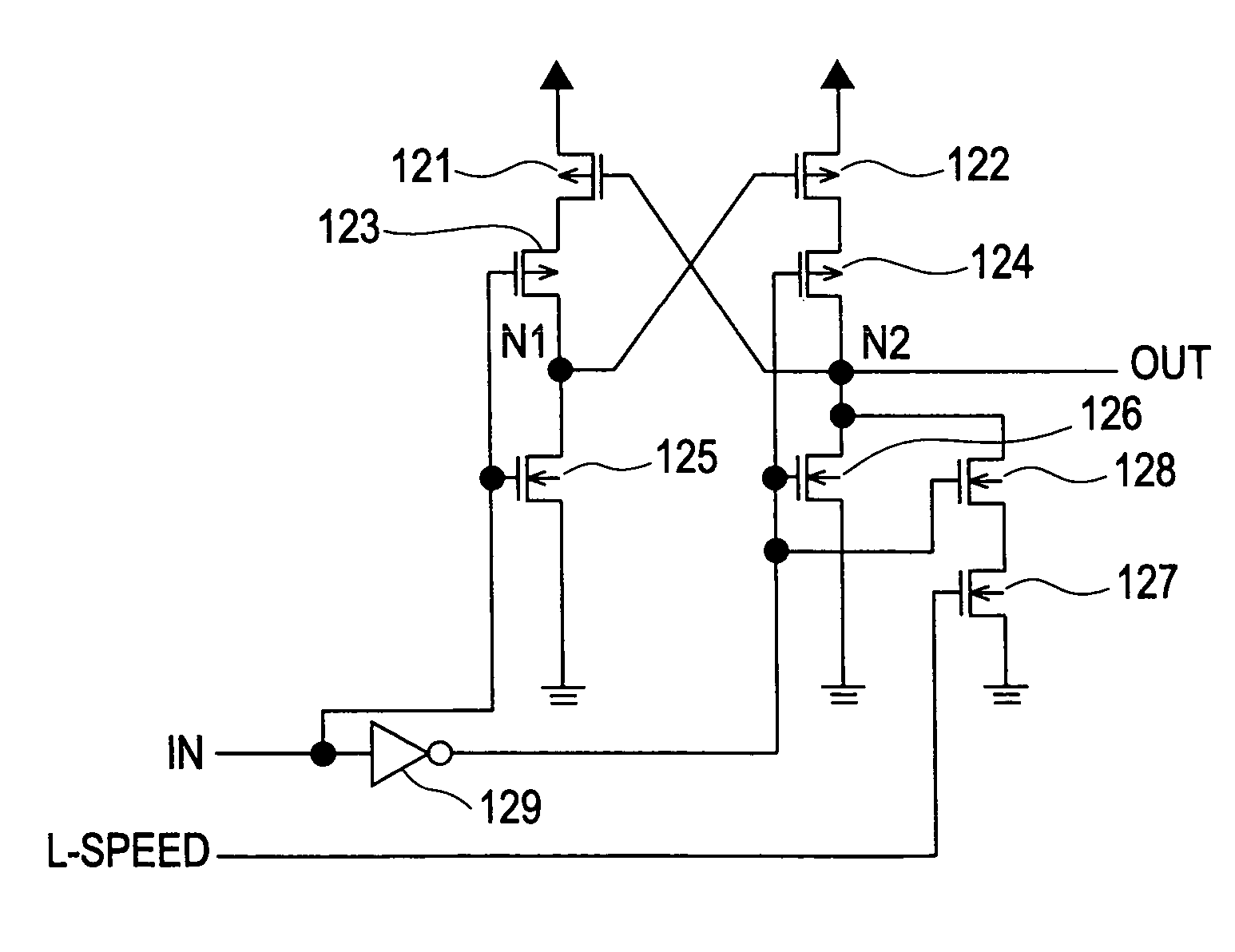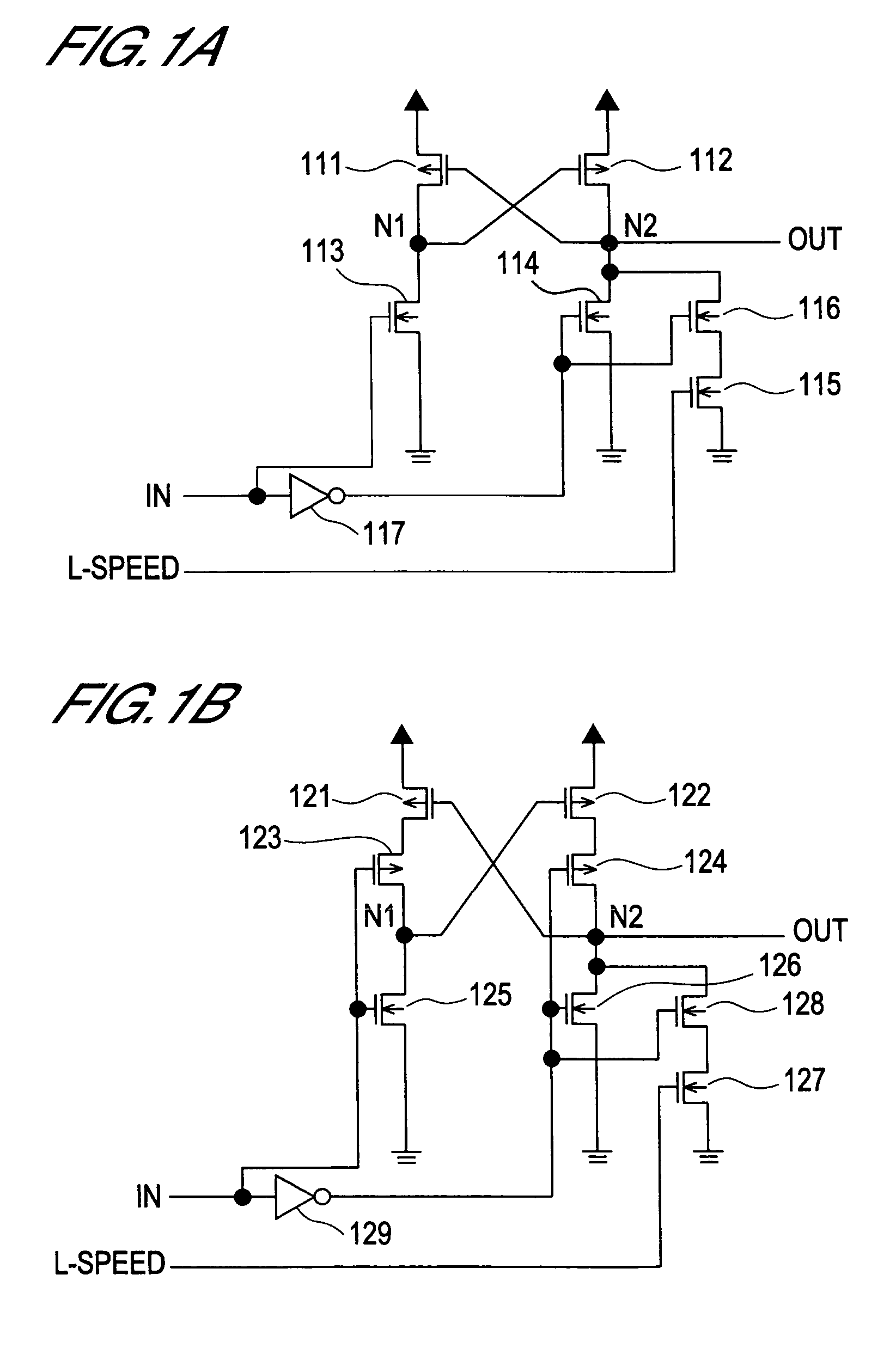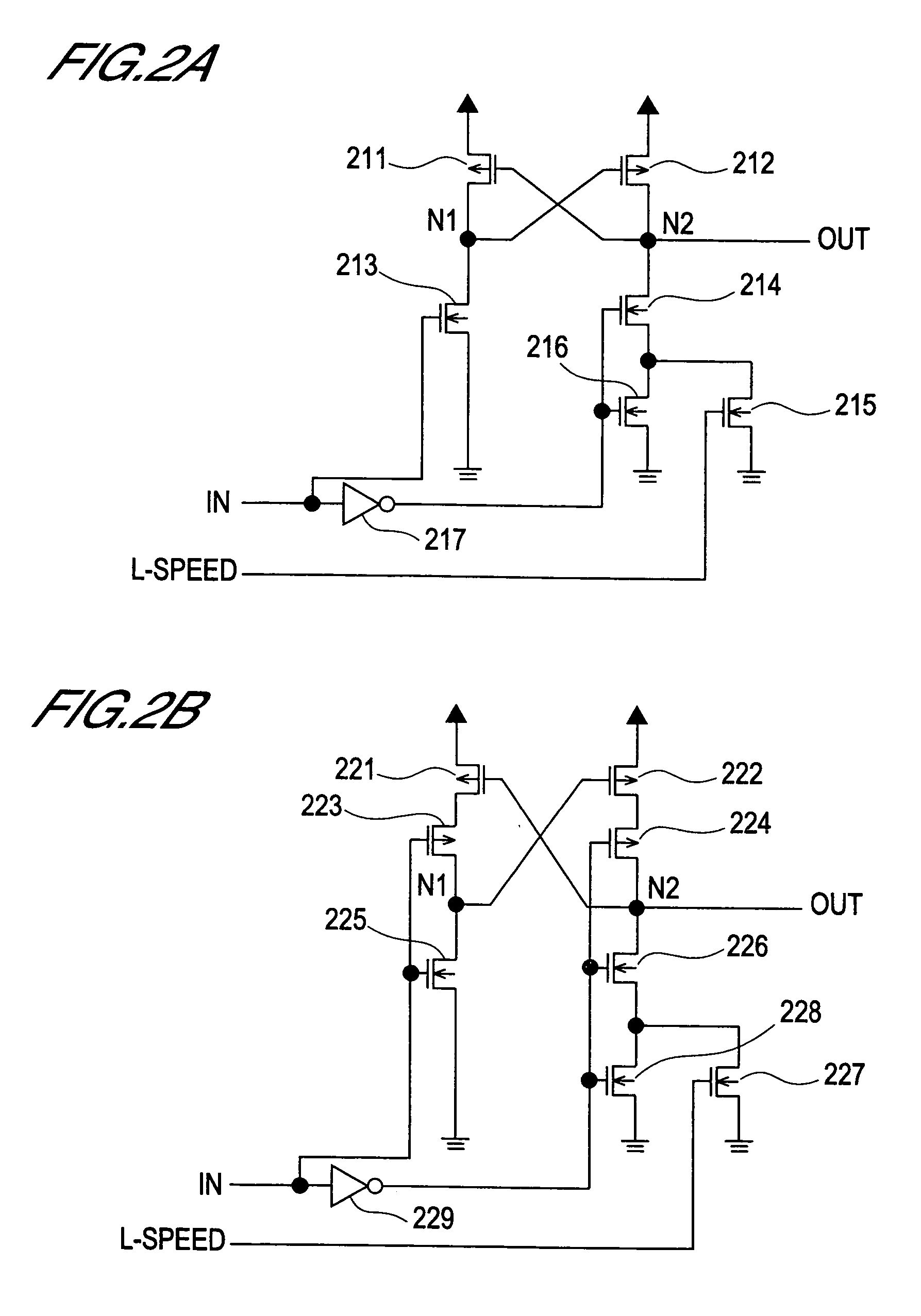Level shift circuit
a level shift and shift circuit technology, applied in logic circuit coupling/interface arrangement, pulse technique, instruments, etc., can solve the problems of insufficient voltage shift amount and operation speed, power consumption increase, and power consumption also low, so as to increase operation speed and voltage shift amount, the effect of increasing the operation speed
- Summary
- Abstract
- Description
- Claims
- Application Information
AI Technical Summary
Benefits of technology
Problems solved by technology
Method used
Image
Examples
first embodiment
[0047]FIG. 1A is a circuit diagram depicting the configuration of key components of the level shift circuit according to the present embodiment. As shown in FIG. 1A, this level shift circuit is comprised of the pMOS transistors 111 and 112, the nMOS transistors 113, 114, 115 and 116, and the inverter 117.
[0048]In the pMOS transistor 111, the source is connected to the power supply line (not illustrated), the drain is connected to the node N1, and the gate is connected to the node N2.
[0049]In the pMOS transistor 112, the source is connected to the power supply line, the drain is connected to the node N2, and the gate is connected to the node N1. Here, in order to recharge the node N2 at high-speed, it is preferable that the current capability of the pMOS transistor 112 is sufficiently high.
[0050]In the nMOS transistor 113, the source is connected to the ground line (not illustrated), the drain is connected to the node N1, and the input signal IN is input from the gate.
[0051]In the nM...
second embodiment
[0089]FIG. 2A is a circuit diagram depicting the configuration of key components of the level shift circuit according to the present embodiment. As shown in FIG. 2A, this level shift circuit is comprised of the pMOS transistors 211 and 212, the nMOS transistors 213–216, and the inverter 217.
[0090]In the pMOS transistor 211, the source is connected to the power supply line, the drain is connected to the node N1, and the gate is connected to the node N2.
[0091]In the pMOS transistor 212, the source is connected to the power supply line, the drain is connected to the node N2, and the gate is connected to the node N1. In order to recharge the node N2 at high-speed, it is preferable that the current capability of the pMOS transistor 212 is sufficiently high.
[0092]In the nMOS transistor 213, the source is connected to the ground line, the drain is connected to the node N1, and the input signal IN is input from the gate.
[0093]In the nMOS transistor 214, the drain is connected to the node N2...
third embodiment
[0131]FIG. 3A is a circuit diagram depicting the configuration of key components of the level shift circuit according to the present embodiment. As shown in FIG. 3A, this level shift circuit is comprised of the pMOS transistors 311 and 312, the nMOS transistors 313–318, and the inverter 319.
[0132]In the pMOS transistor 311, the source is connected to the power supply line, the drain is connected to the node N1, and the gate is connected to the node N2. In order to recharge the node N1 at high-speed, it is preferable that the current capability of the pMOS transistor 311 is sufficiently high.
[0133]In the pMOS transistor 312, the source is connected to the power supply line, the drain is connected to the node N2, and the gate is connected to the node N1. In order to recharge the node N2 at high-speed, it is preferable that the current capability of the pMOS transistor 312 is sufficiently high.
[0134]In the nMOS transistor 313, the source is connected to the ground line, the drain is co...
PUM
 Login to View More
Login to View More Abstract
Description
Claims
Application Information
 Login to View More
Login to View More - R&D
- Intellectual Property
- Life Sciences
- Materials
- Tech Scout
- Unparalleled Data Quality
- Higher Quality Content
- 60% Fewer Hallucinations
Browse by: Latest US Patents, China's latest patents, Technical Efficacy Thesaurus, Application Domain, Technology Topic, Popular Technical Reports.
© 2025 PatSnap. All rights reserved.Legal|Privacy policy|Modern Slavery Act Transparency Statement|Sitemap|About US| Contact US: help@patsnap.com



